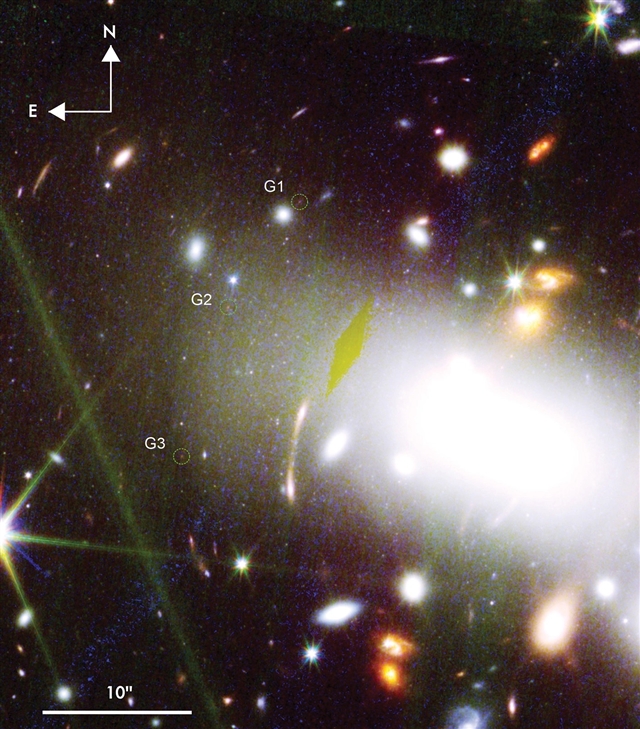
该课题组报道了一个被引力透镜放大的远古星系的詹姆斯·韦伯太空望远镜成像结果。在该星系的静止参考系下,JWST光谱测量到氧和氢的强烈星云发射线。测量到的红移为z=9.51±0.01,相当于大爆炸后5.1亿年。该星系的半径为16.2+4.6或16.2-7.2秒,比在z ~ 6到8时具有相同亮度的星系更为紧密,因此具有更高的恒星形成率表面密度。
研究人员表示,早期星系的紫外线被认为电离了星系间介质中的气体。然而,由于这些星系的微弱亮度和它们的光学光线向红外线的红移,这个时期的观测限制很少。
附:英文原文
Title: A magnified compact galaxy at redshift 9.51 with strong nebular emission lines
Author: Hayley Williams, Patrick L. Kelly, Wenlei Chen, Gabriel Brammer, Adi Zitrin, Tommaso Treu, Claudia Scarlata, Anton M. Koekemoer, Masamune Oguri, Yu-Heng Lin, Jose M. Diego, Mario Nonino, Jens Hjorth, Danial Langeroodi, Tom Broadhurst, Noah Rogers, Ismael Perez-Fournon, Ryan J. Foley, Saurabh Jha, Alexei V. Filippenko, Lou Strolger, Justin Pierel, Frederick Poidevin, Lilan Yang
Issue&Volume: 2023-04-13
Abstract: Ultraviolet light from early galaxies is thought to have ionized gas in the intergalactic medium. However, there are few observational constraints on this epoch, due to the faintness of those galaxies and the redshift of their optical light into the infrared. We report the observation, in James Webb Space Telescope (JWST) imaging, of a distant galaxy that is magnified by gravitational lensing. JWST spectroscopy of the galaxy, at rest-frame optical wavelengths, detects strong nebular emission lines due to oxygen and hydrogen. The measured redshift is z = 9.51 ± 0.01, corresponding to 510 million years after the Big Bang. The galaxy has a radius of 16.2+4.6-7.2parsecs, substantially more compact than galaxies with equivalent luminosity at z ~ 6 to 8, leading to a high star formation rate surface density.
DOI: adf5307
Source: https://www.science.org/doi/10.1126/science.adf5307
